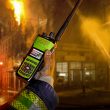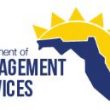The hope and reality of Project 25
Conventional wisdom says that land mobile radio dealers stand to profit handsomely as their first responder clients migrate to radios compliant with APCO’s Project 25, or P25, digital communications standard. Currently, however, P25 sales to these clients are being hampered by the absence of an all-encompassing set of standards; the high cost of P25-compliant equipment; and the perception amongst smaller first responder agencies that — despite the considerable expense — P25 technology lacks value-added benefits that might justify the cost.
While some believe that the work on P25 never will be completed, because the standard will continue to evolve as technology develops and circumstances change, Randy Power, president of Phoenix-based ProComm, believes too many key issues remain unresolved today. That makes it more challenging to sell the technology. Until those issues are resolved, “end users will continue to be confused and frustrated about the requirements for purchasing … P25 radios,” he said.
They also seem frustrated about the cost of P25 radios. One attendee of IWCE 2007, held in Las Vegas in March, suggested during a panel discussion on public-safety communications technology that spending $5000 for a P25 radio seemed more than a bit excessive. But such radios are fully loaded “with all of the bells and whistles,” according to John Powell, a member of the P25 Steering Committee, who appeared on the panel. Powell added that such radios “bid out at about $2700 for quantity purchases.”
Nevertheless, many public-safety officials believe even that price point is beyond their reach, particularly when compared with the cost of analog radios.
“An average analog radio costs $500; add P25 functionality to it, and you’re adding an extra $1000 to the price,” said Mark Hall, a public-safety specialist at Frontier Radio in Denver. “That’s a huge leap for a lot of departments, especially if they plan to use these radios in analog mode in rural areas.”
Given current confusion amongst end users regarding the P25 standard, dealers can count on spending a lot of time educating clients about this technology. It’s a task made more difficult by the competing claims of land mobile radio manufacturers.
“The major problem in selling P25 units in my geographic area is that many of the end users think they are required to purchase Motorola radios since the information being disseminated by some of their sales force is that they have the only compliant P25 radio,” Power said. “After we go through the extensive discussion process with customers explaining to them what is — and what is not — P25-compliant, many times we end up making the sale.”
Adding to the confusion is the wide range of P25 price points. According to Powell, there are several P25 portables currently on the market for as little as $700, and one vendor at IWCE offered a $900 trade-in on any radio toward the purchase of a P25 handset. But end users often assume that devices on the low end of the pricing scale can’t possibly be P25-compliant.
“In the end users’ minds is, ‘Why are your radios so much cheaper than the Motorola radios,’ meaning that non-Motorola radios must not be P25-compliant,” Power said. “After we again explain how competitive manufacturers such as ICOM, Bendix/King, Kenwood, Vertex, Midland and others sell P25 products that do the same things for less money, our customers seem to come around.”
Interoperability also is a concern that slows sales, according to Power. However, the standard’s Inter-RF Subsystem Interface, or ISSI — which lets disparate P25 devices communicate with each other — was finalized last year, and both EADS and Etherstack — which is working with Raytheon JPS — currently have ISSI-based products on the market. In fact, EADS is using ISSI to interface new P25 systems with legacy conventional and analog trunking systems, according to Powell.
All of these challenges aside, P25 clearly is the radio standard of the future for U.S. first responders, as evidenced by the fact that the purchase of such systems and equipment are a requirement for receiving grant money, particularly at the federal level. “We are selling primarily conventional P25 radios at this time, and the majority of our customers are police and fire departments who are getting grant money,” ProComm’s Power said.
So what can dealers do to put themselves in better position to cash in on the opportunities presented by P25? The process begins by educating dealership staff, said Myron Polulak, president of New England Communications Systems in Windsor, Conn.
“Dealers have to take a leadership role in helping first responders understand, plan for and execute P25,” he said. “This is why we’ve invested significantly in P25 training for our technicians and sales people, to make sure they understand the capabilities and benefits of this technology.”
But training staff to work comfortably with P25 is not always easy, according to Hall, because many dealer personnel have become so accustomed to working with proprietary analog radios. “Still, it is important for them to grasp this new technology because it is where the public-safety radio is going,” he said. “So we just keep working at it, until they get it.”
Once dealership staff is up to speed, the next step is to contact first responder clients and talk to them about their P25 plans, ideally working with them from the beginning to develop a migration plan, Polulak said. “We sit down and explore the options of P25 — the features and the benefits — then map out ways that they can start their migration that is affordable and realistic, yet has enough room for upgrades in the years to come.”
The most prudent approach to developing a P25 migration strategy is to devise such plans with an eye to reusing as much of the client’s existing infrastructure as possible, in order to keep costs down, and to executing the transition incrementally, in order to spread the expense over time. Specifying P25 portables that are backward-compatible — capable of operating in conventional analog mode, then switching to digital mode when a client chooses to upgrade — is a smart way to deal with P25 sticker shock, Polulak said.
“First responders don’t need to go to P25 digital immediately,” he said. “But they do need to be prepared to make the change down the road. That’s why a P25 analog/digital migration path makes sense for many of our clients.”
Once the client begins its P25 migration, its dealer needs to be with them every step of the way. This means providing ongoing customer support and service, from technical consultations to “hand-holding” for digital neophytes, according to Polulak. After all, the technological leap that P25 migration requires is daunting for many first responder agencies, but especially small and/or rural entities with limited resources and volunteer manpower.
Following this path without expert help is a recipe for disaster, which is why savvy dealers will act as their clients’ communications partners/consultants, rather than just their suppliers of two-way radios. Not only will this make the P25 transition less painful for LMR dealer clients, but it also is an effective way to build long-term relationships and repeat sales in the years to come.
“Our job is to be there for our clients,” Polulak said “When it comes to the P25 migration, this level of commitment is good customer service and good for business, too.”
With reporting by Glenn Bischoff.
A primer for priming the pump
To capitalize on the P25 transition for sales, dealers should:
- educate themselves fully on P25 standards and technology.
- educate their staff about P25.
- identify P25 products that are cost-effective and truly interoperable for public safety agencies.
- contact their clients and ask about their P25 plans.
- educate clients about P25.
- help clients without plans to devise them, with an eye to reducing client cost through solutions that use their existing infrastructure and offer an analog-to-digital path.
- provide ongoing support to customers making the P25 transition.

















